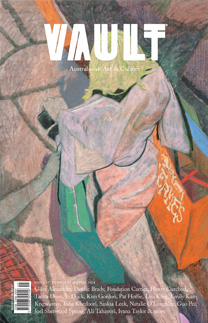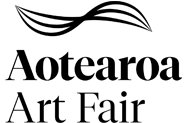Riley Payne
Humour, Profundity and Hard Labour
VAULT stops by at the studio of New York-based Melbourne artist Riley Payne to mull over all that underpins the self-taught artist’s fastidiously drawn forms.
Riley Payne’s new studio is in an old waterfront warehouse in Greenpoint, Brooklyn. The building seems full of those kinds of creative start-ups that boast ping-pong tables and gigantic espresso machines. His space, though, is windowless, almost ascetic, but it’s just the right size to hold his upcoming solo show at Melbourne’s Tolarno Galleries – his first since being signed to the gallery.
His walls hold a series of figurative, black pencil drawings with superimposed text or shapes. At first, his drawings recall the juxtapositions of James Rosenquist’s billboard-like canvases. Payne’s overlaying of text on image also brings to mind Ed Ruscha’s use of text as a formal device. Both Rosenquist and Ruscha worked in advertising before they made it big and although Payne hasn’t done so himself, all three artists mine Pop’s symbiotic relationship with commercial art.
Payne is completely self-taught, yet he’s no outsider. His work – figurative and handmade, yet looking outward to confront our digital world – pushes a lot buttons right now. His monochrome palette,
in the sea of vibrant coloured screens in which we live, seems to translate the efflorescence of the digital into an alternate system that’s alive yet uncanny, not unlike the experience of watching classic black-and-white movies on a phone.
He used to be a skater and his work does have a trace of graffiti or street art: not of colourful spray tags, but rather realist murals ... Subscribe to read this article in full

























